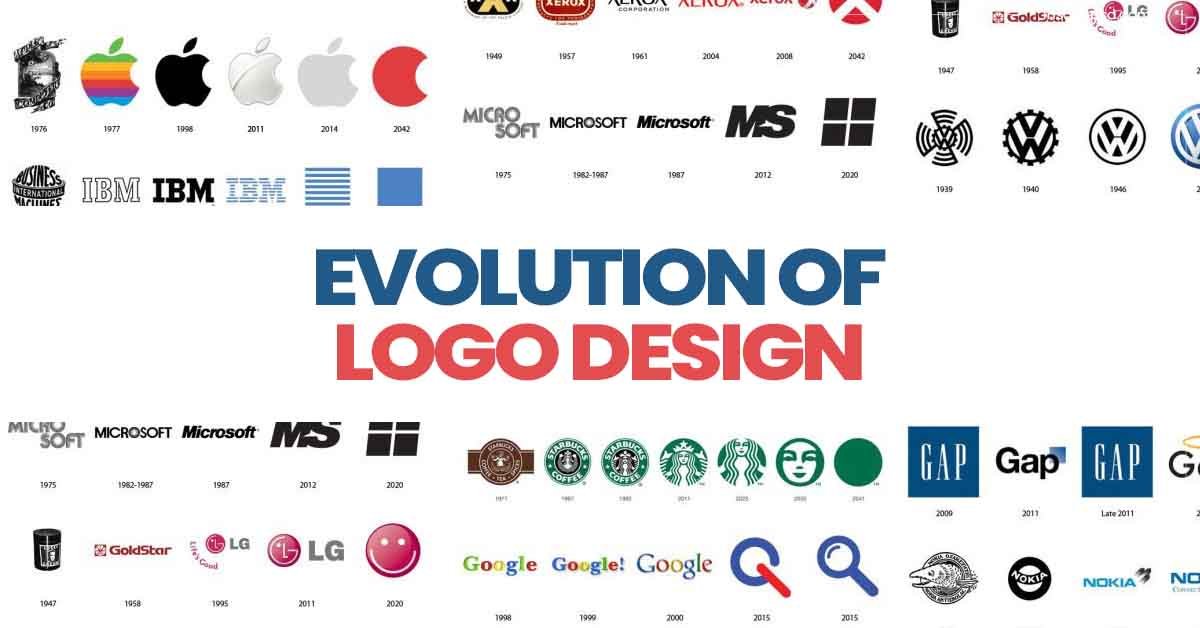Logos are more than just symbols; they are the visual embodiment of a brand’s identity. The evolution of logo design is a fascinating journey that mirrors changes in technology, cultural shifts, and branding strategies. In this blog post, we’ll explore how logo design has transformed from its earliest forms to the sleek, minimalist designs we see today.
The Origins of Logo Design
Ancient Symbols and Heraldry
The concept of a logo can be traced back to ancient civilizations. Egyptian hieroglyphs, Roman insignias, and medieval coats of arms all served as early forms of branding. These symbols were used to convey power, lineage, and ownership.
Trade Marks in the Industrial Revolution
With the advent of the Industrial Revolution in the 18th and 19th centuries, mass production necessitated the need for unique identifiers. Companies began using trademarks to distinguish their products from competitors. This era saw the birth of some of the world’s oldest logos, like the Bass Brewery’s red triangle, registered in 1876.
The 20th Century: Birth of Modern Logo Design
Early 20th Century: Art Deco and Modernism
The early 20th century was marked by the Art Deco and Modernism movements, which influenced logo design significantly. Designers began to favor geometric shapes, bold colors, and clean lines. Notable examples include the iconic logos of General Electric and IBM, which were created during this period.
Mid 20th Century: Simplicity and Corporate Identity
The mid-20th century saw a shift towards simplicity and the development of corporate identity systems. Legendary designer Paul Rand revolutionized logo design with his work for IBM, ABC, and UPS. His approach emphasized simplicity, memorability, and versatility.
The Digital Age: 1980s to Early 2000s
Rise of Digital Design Tools
The advent of personal computers and graphic design software in the 1980s and 1990s transformed logo design. Tools like Adobe Illustrator allowed designers to experiment with new styles, gradients, and effects. This era saw the rise of logos with complex, 3D effects and intricate details.
Dot-Com Boom and the Y2K Aesthetic
The late 1990s and early 2000s, characterized by the dot-com boom, brought a wave of futuristic and tech-inspired logos. Many tech companies adopted sleek, sans-serif typefaces and abstract symbols to convey innovation and modernity.
Contemporary Trends: Minimalism and Adaptability
Flat Design and Minimalism
In the 2010s, flat design became the dominant trend in logo design. This style, characterized by simplicity and a lack of three-dimensional effects, was driven by the need for logos to be adaptable across various digital platforms. Google, Microsoft, and Instagram are prime examples of brands that embraced flat design.
Responsive and Adaptive Logos
With the proliferation of mobile devices, logos must now be responsive and adaptable. Designers create multiple versions of a logo to ensure it looks good on screens of all sizes. This trend underscores the importance of flexibility in modern branding.
The Future of Logo Design
Motion and Interactive Logos
As technology continues to evolve, so too will logo design. Motion and interactive logos are becoming increasingly popular, offering a dynamic way to engage audiences. Animated logos can convey more information and personality than static ones.
AI and Generative Design
Artificial intelligence and generative design are set to revolutionize logo design. AI can analyze vast amounts of data to generate logo concepts, offering designers new tools to create innovative and personalized designs.
Conclusion
The evolution of logo design reflects broader changes in technology, culture, and branding strategies. From ancient symbols to modern, adaptive logos, the journey is marked by innovation and creativity. As we look to the future, it’s exciting to imagine how emerging technologies will shape the next chapter in the history of logo design.
By understanding the history and trends in logo design, businesses and designers can create logos that are not only aesthetically pleasing but also effective in communicating brand identity in a rapidly changing world.
